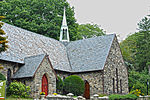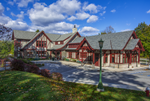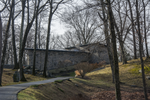Briarcliff Lodge

The Briarcliff Lodge was a luxury resort in the village of Briarcliff Manor, New York. It was a notable example of Tudor Revival architecture, and was one of the largest wooden structures in the United States. It was also the first hotel in Westchester County. Walter William Law had it built on his estate, and the Law family owned it until 1937. When the lodge opened in 1902, it was one of the largest resort hotels in the world. The lodge hosted presidents, royalty, and celebrities, and was the scene of numerous memorable occasions for visitors and local residents who attended weddings, receptions, and dances in the ballroom and dining room. For a long time, the lodge was situated among other businesses of Walter Law, including the Briarcliff Farms and Briarcliff Table Water Company. In 1933, the lodge ended year-round service and housed a "health-diet sanitarium" until the Edgewood Park School for Girls began operation there from 1937 to 1954. From 1936 to 1939, the lodge was run again as a hotel in the summer months while the school was closed. From 1955 to 1994, The King's College used the lodge building and built dormitories and academic buildings. Abandoned and unmaintained after 1994, the Briarcliff Lodge was destroyed between 2003 and 2004.
Excerpt from the Wikipedia article Briarcliff Lodge (License: CC BY-SA 3.0, Authors, Images).Briarcliff Lodge
Lodge Road,
Geographical coordinates (GPS) Address Nearby Places Show on map
Geographical coordinates (GPS)
| Latitude | Longitude |
|---|---|
| N 41.148111 ° | E -73.839722 ° |
Address
Lodge Road
Lodge Road
10510
New York, United States
Open on Google Maps








